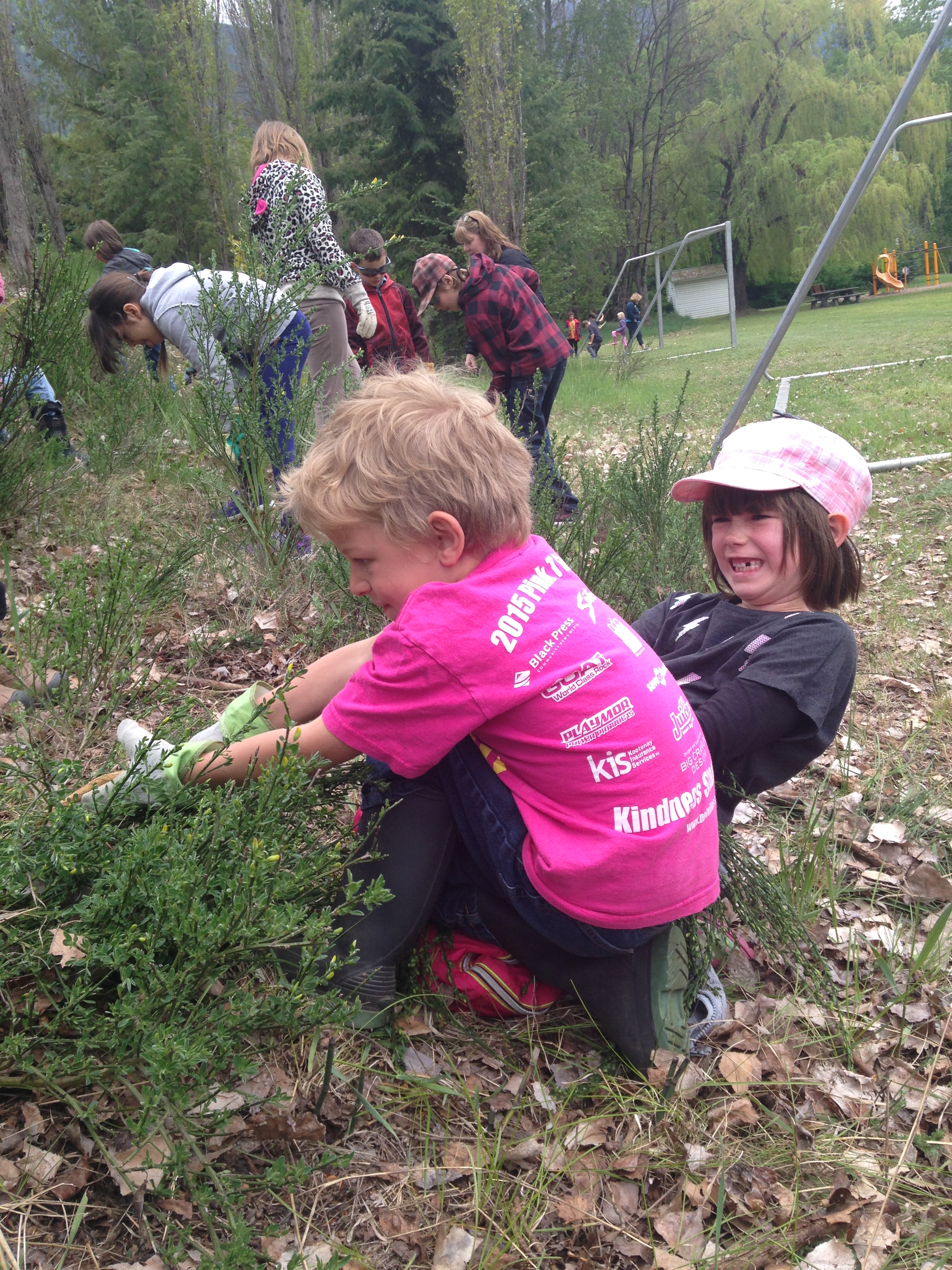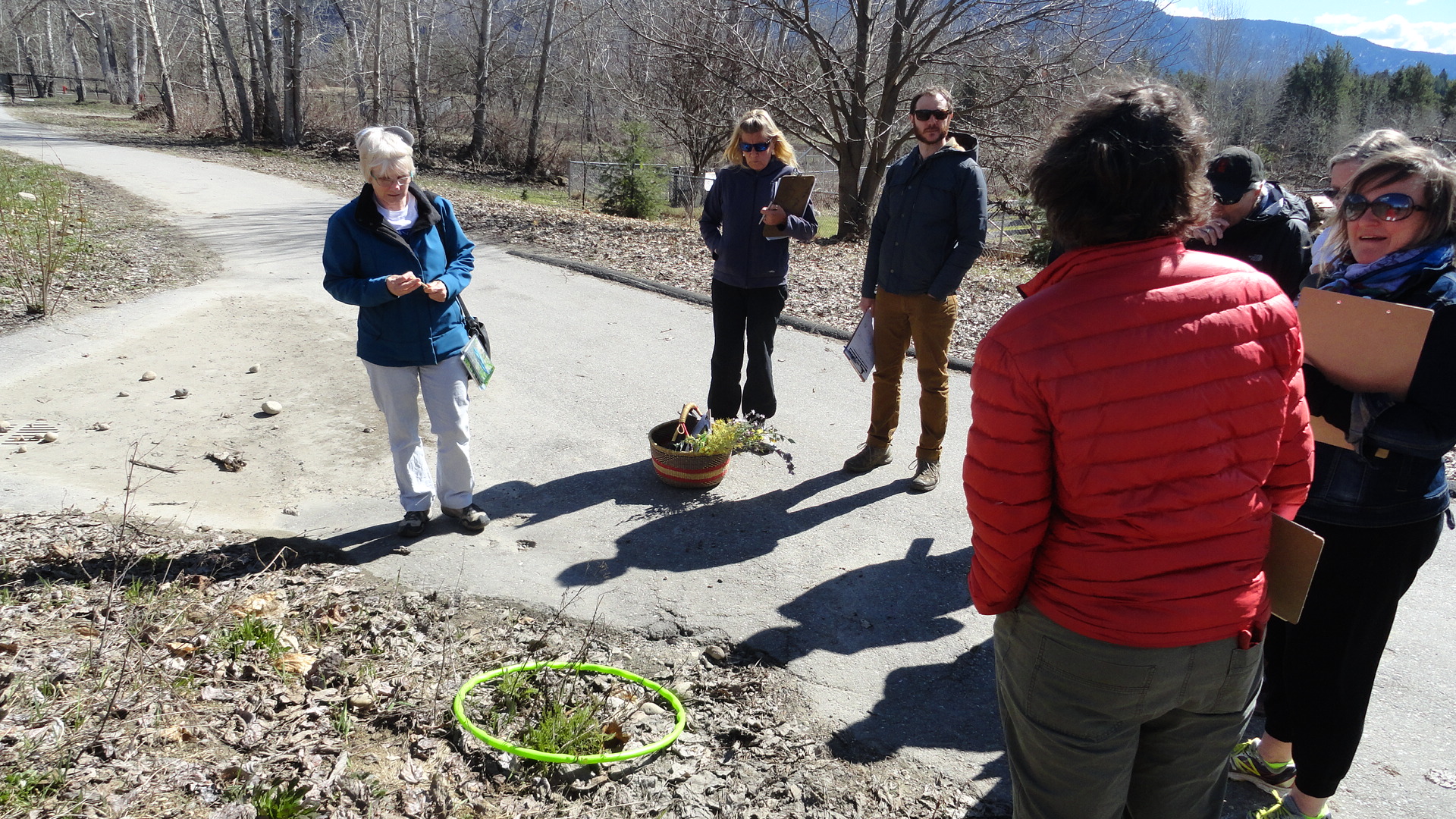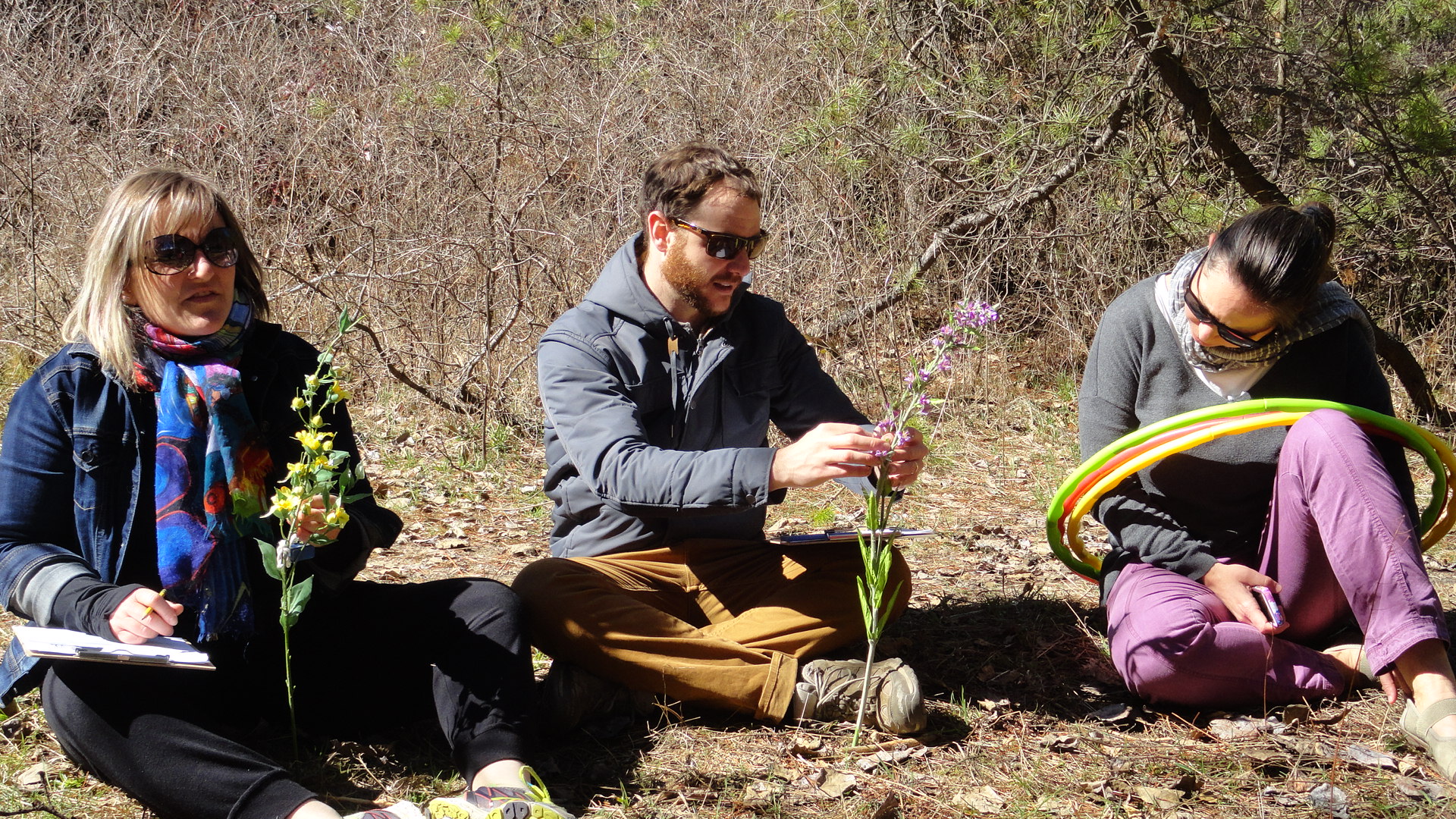In the workshop, Laurie Frankcom from the Central Kootenay Invasive Species Society (CKISS), Valerie Huff and Brenda Beckwith, botanists and members of the Kootenay Native Plant Society (KNPS), and Megan Read, District Aboriginal Education Teacher reviewed a variety of educational strategies, hands-on activities, and fieldwork planning tools to support students in learning about invasive and native species in their communities.

The new BC Science Curriculum for K – 7 focuses on project- and inquiry-based learning, experiential activities, place-based learning, and infused Aboriginal content. Invasive and native species identification and ecosystem processes are a perfect fit for meeting the new approach including integrated subject approaches, competencies, and content. Teachers received classroom-ready resources, including how to develop effective action projects, that support the engagement of students in the investigation of the effects and interconnections of all species in local ecosystems, economies, and cultures through time.

The expansion of invasive exotic species is a serious issue world-wide, representing the second greatest threat to global biodiversity after habitat loss, and costing governments and communities tens of millions of dollars in control efforts. It is important to engage people of all ages in identifying and taking action. Young people are a particularly important audience; the control of invasive species, unlike many large-scale environmental issues, is something that students can actually do something about, in a hands-on, experiential way.

Habitat loss and fragmentation, continued development and industrial expansion, alternations in ecological processes, climate change, and competition from the introduction of invasive species have all contributed to the loss and imperilment of native species. Native species are critical for the continuation of functioning of ecosystems, human wellbeing, and a healthy environment. Learning about native species can help students understand their local ecosystems and the essential roles of native species, engage with biodiversity issues, and can foster positive relationships with plants and other species native to their home place.

Native species, especially plants, have played integral roles in human cultures since time immemorial. Indigenous peoples have used, managed, and cultivated native plants in myriad ways to meet their economic, dietary, and societal needs. Maintaining healthy, sustainable, and respectful relationships with plants – and with all beings – is seen as integral to cultural identity. The loss of native species around the world results in not only the loss of biodiversity but also irreversible losses of cultural diversity and significant time-honored human-environmental connections.

Do you want to host a workshop in your school’s district?
If you are interested in hosting a professional development day for teachers in your school please contact Laurie Frankcom, CKISS Education Program Coordinator. We have a BIG collection of resources, lesson plans and activities on the TEACHER PAGE of our website. Do you want to know how the topic of invasive species can be linked to the new B.C. curriculum? Click here to find out.

